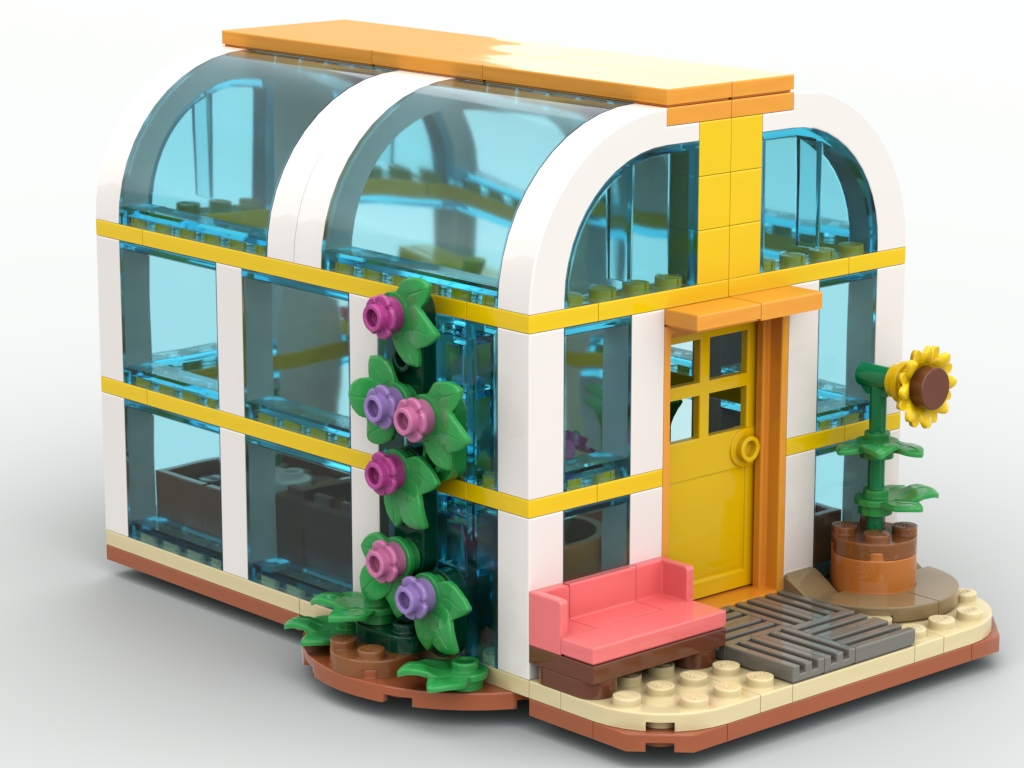
Abuelita’s Greenhouse
Take care of plants, harvest the crops, and share with the community in Abuelita’s cozy greenhouse.
LEGO Friends, 5+
297-320 Pieces + 2 Minidolls (Leo and Abuelita)
The Idea and Early Design
When I started designing this set, I wanted to create something that could engage children with a story, but that also gave them room to tell their own. I focused on ages 4 to 5, so it had to be easy to build on their own, avoiding small bricks where possible, using larger pieces and simple connections. The greenhouse came together first. It had a cozy feel, like a little world within itself, and I loved the idea of it opening up for better access but still looking great when closed. I used large glass panels so the shape would be satisfying to build and easy to understand as it rose. At one point I tried adding skylights that could open, but it felt too technical for tiny fingers. I was happy with the structure, but something still felt missing.
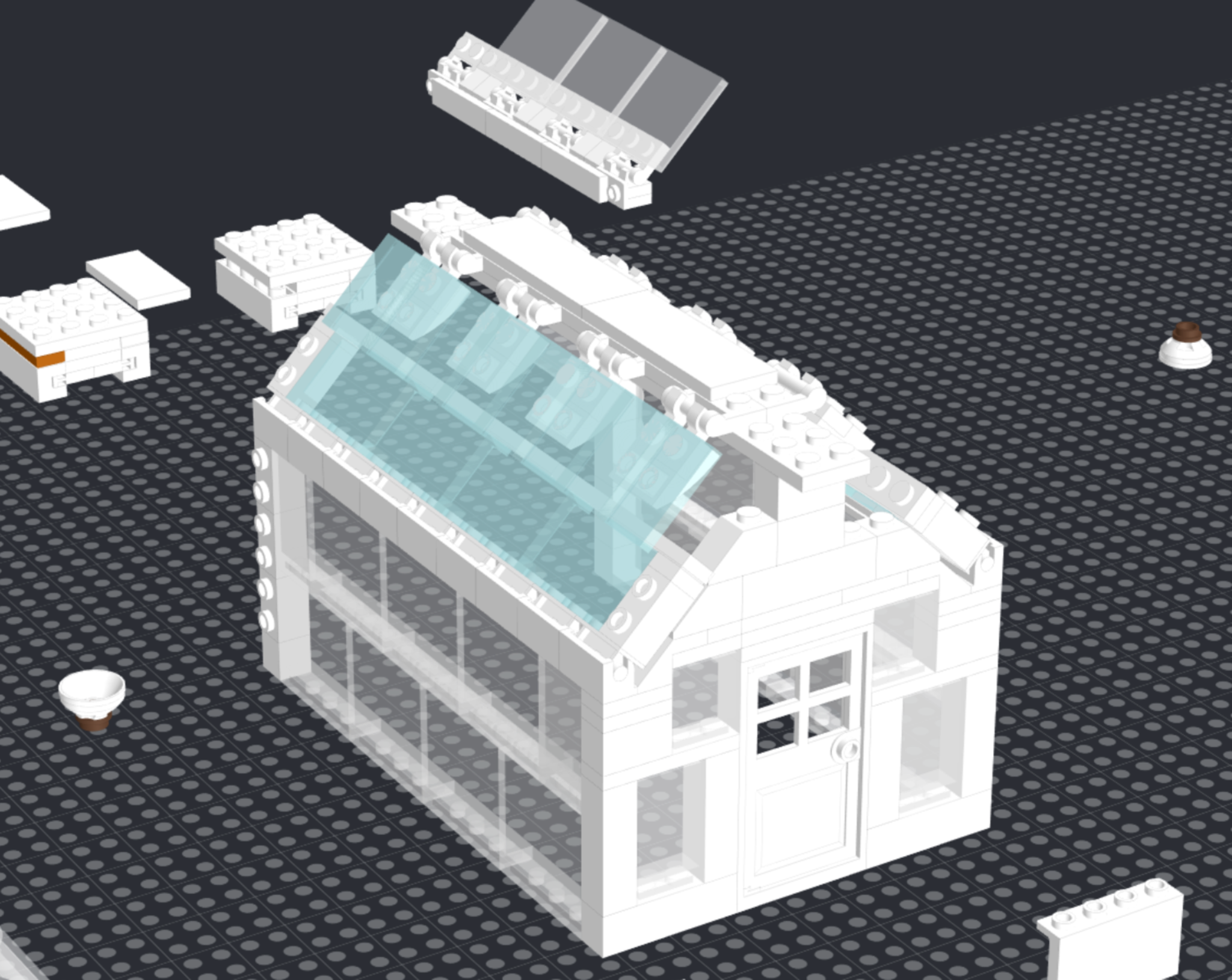
The Market Stall and the Gameplay Loop
I realized that while the greenhouse was nice on its own, I hadn’t fully considered how a child could continuously play with it after building it. Sure, they could water the plants and take care of them, but that seemed like it could become stale quickly, so I wanted to go a step further and give them a way to use what they were growing. That’s where the idea for the market stall came in. Now, a child could imagine growing vegetables or flowers in the greenhouse, harvesting them, and then selling, or just sharing them at the stall.
That completed the gameplay loop: care, grow, harvest, share, repeat. And if they had any other LEGO sets, they’d likely have other characters who could come by and "shop" at the stall, adding even more possibilities. It felt like a much more holistic play experience, and more in line with how children love to mimic the world around them.
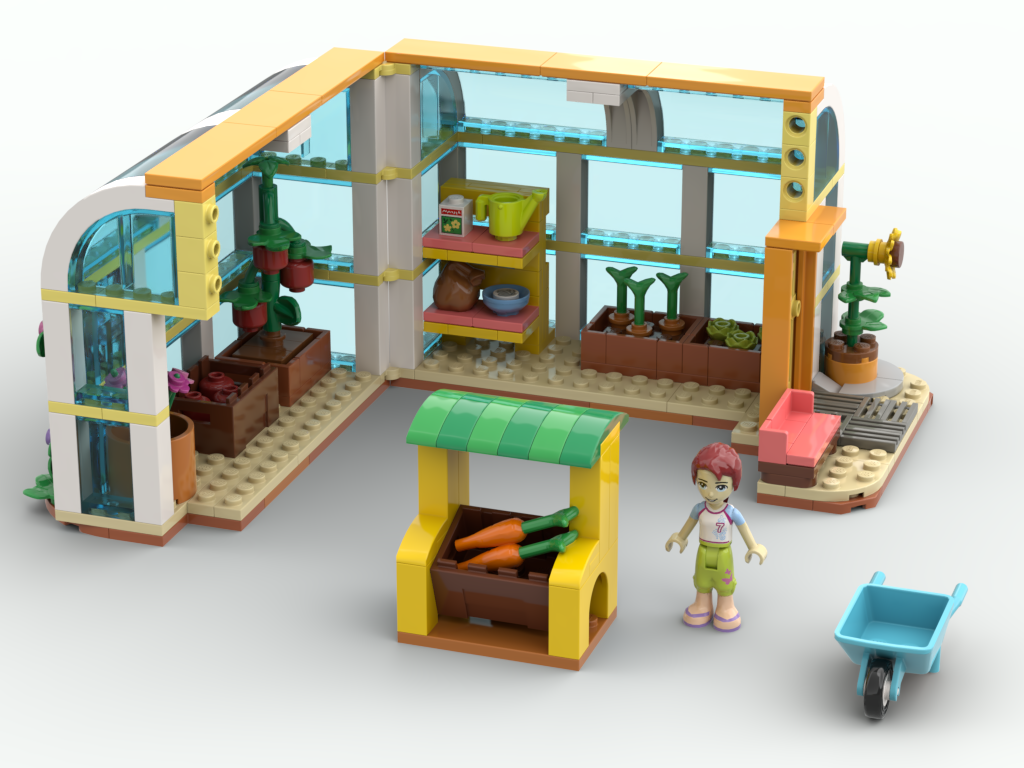
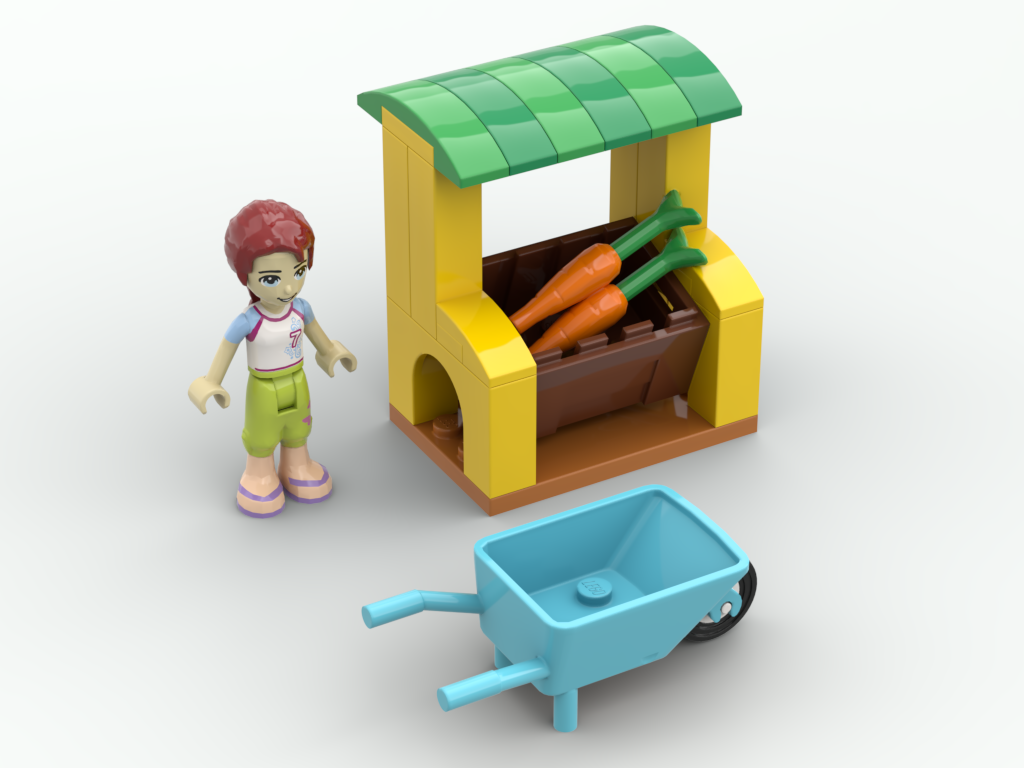
Characters, Generations, and Personal Inspiration
Although I have included Mia from LEGO Friends in the render, I do realize she is from the old LEGO Friends line. That is simply because that is what I could find of pieces in BrickLink Studio, however from the new line I was really inspired by Leo and his abuelita, and maybe even Alba, his younger sister. They already have the community kitchen set, and I thought it would be lovely if this set could represent cross-generational play as well. With Leo, or Alba, growing plants with their grandmother, learning from her, and working together to run their little market stall. That felt really close to home for me. I have two children myself, and seeing them work side by side with their own abuelita (they call her Lita), helping in the garden, cooking, learning, there’s something really special in that connection. It’s sweet, it’s nurturing, and it feels timeless. I wanted that feeling to be part of the story this set tells.
Alternatively, Mia could still be featured alongside Autumn, her daughter, who thematically also could be a good fit with her interests.
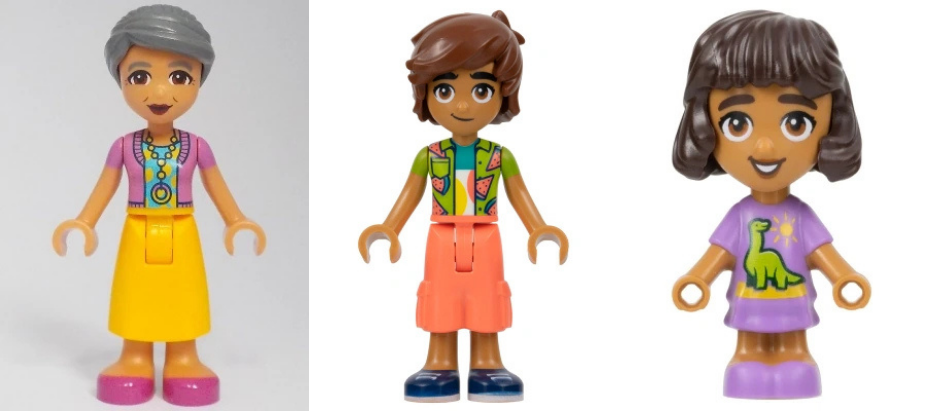
Why This Set Matters
To me, this set is more than just a greenhouse and a market stall. It’s a little ecosystem, a space where kids can build something themselves, watch a structure rise under their hands, and then use it to tell stories about growth, sharing, and care. It’s grounded in real-world play but with the whimsy and creativity that LEGO brings. I wanted it to be intuitive and fun to build, with enough depth that children could return to it again and again, each time with a slightly different story to tell. It’s about connection: to the plants they grow, to the people around them, and to the world they’re learning to understand through play.
Build Notes
- I considered having a built in sliding modular planter box system, but it took up too much space, and became too technical. The current iteration is still modular, and children can move the shelves and boxes around as they wish
- The plants shown is representative of what could be included, I feel having a few more options allows more creative swapping between what is growing and being sold/shared. I've include an example below in the gallery.
- Since the design is with children in mind, I decided to suspend reality a bit in terms of what makes sense to actually grow in a greenhouse, vs what was also available in the brick library.
- Concerning the bricks with studs on the sides and Technic bricks with the holes above the door: a real life test is needed to see if the 3 connections would be too much for small hands to pry open, or if 2 or even just 1 would suffice
Gallery

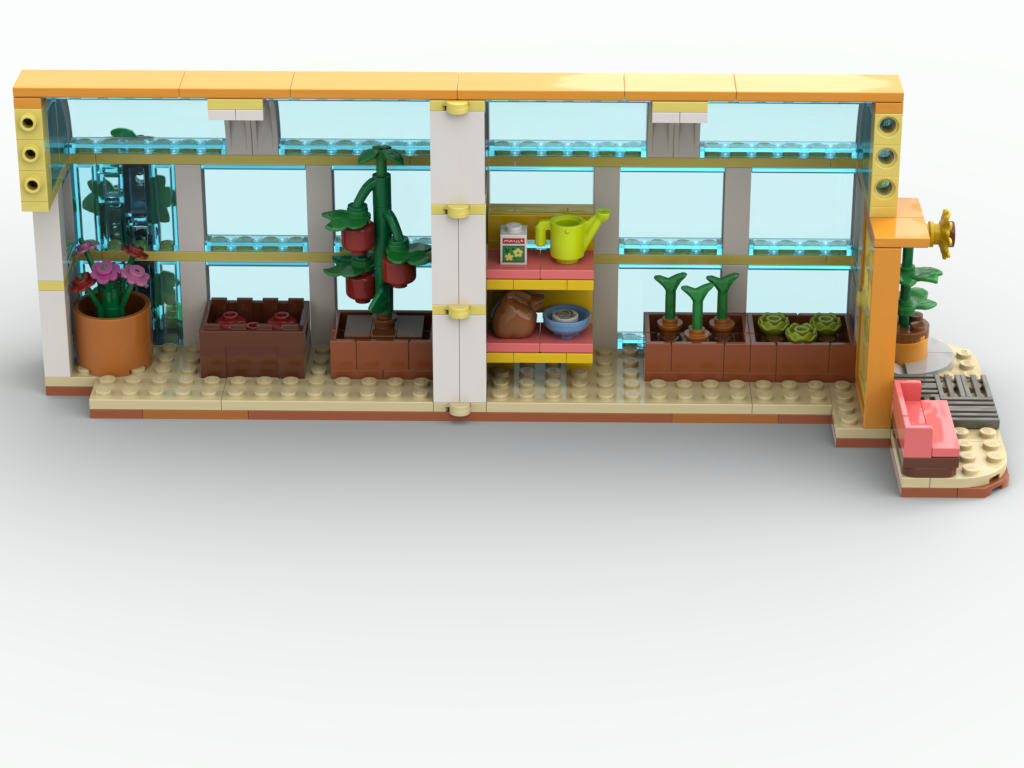
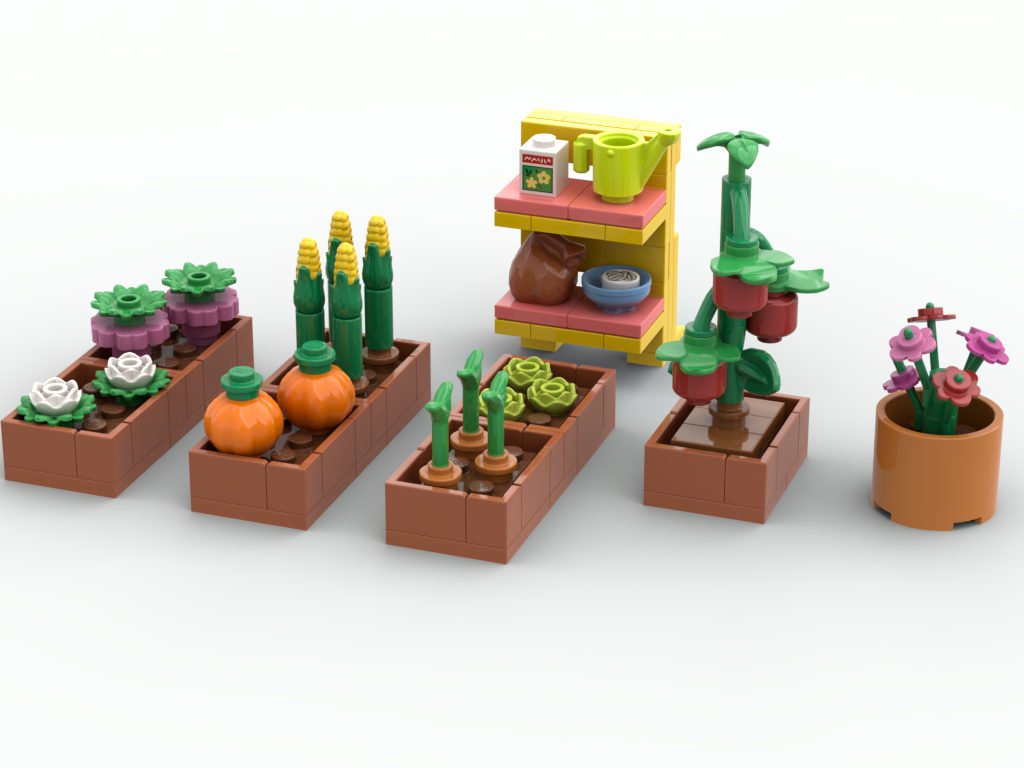
0 Comments Add a Comment?